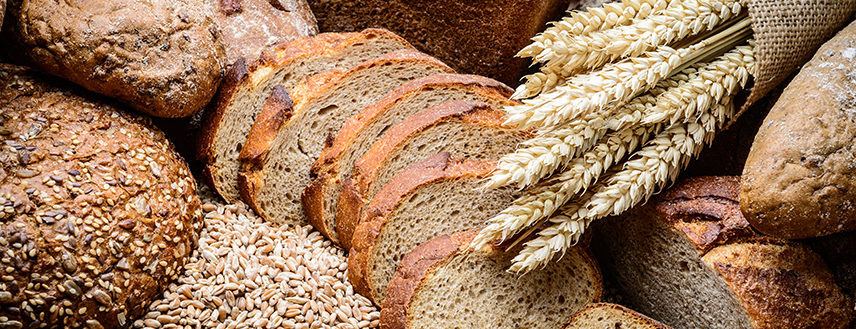
We’ve all heard that whole grains are better for us, but there is confusion as to what constitutes whole grain and why it’s beneficial. In 2004 the Whole Grains Council approved the following definition: “Whole grains or foods made from them contain all the essential parts and naturally-occurring nutrients of the entire grain seed in their original proportions. If the grain has been processed (e.g., cracked, crushed, rolled, extruded, and/or cooked), the food product should deliver the same rich balance of nutrients that are found in the original grain seed.”
When consumed in a form that includes the bran, germ and endosperm, these are examples of whole grain foods and flours:
- Amaranth
- Barley
- Buckwheat
- Corn, including whole cornmeal and popcorn
- Millet
- Oats, including oatmeal
- Quinoa
- Rice, both brown and colored
- Rye
- Sorghum (sometimes called milo)
- Teff
- Triticale
- Wheat (including spelt, emmer, faro, durum, bulgur, and cracked wheat)
- Wild rice
Whole Wheat vs. Whole Grain
This can be confusing. As mentioned above, whole grain contains the entire kernel of the grain from the bran to the endosperm to the germ. Whole wheat removes the bran and germ during the refining process and is left containing only the endosperm. Unfortunately, the majority of vitamins and fiber are contained in the wheat bran and wheat germ that is shed during the refining process.
Whole wheat flour goes through a refining process that removes as much as half of its nutrients. Whole grain flour is not refined and therefore maintains its full nutritional value. For example, whole grain bread is a good source of B vitamins and fiber and is also lower in fat than whole wheat bread.
Heart Health Benefits of Whole Grains
Whole grains are bursting with nutrients including protein, fiber, B vitamins, antioxidants, and trace minerals (iron, zinc, copper, and magnesium). A diet rich in whole grains has been shown in multiple repeated studies to:
- Reduce stroke risk by 30-36%
- Reduce type 2 diabetes by 21-30%
- Reduce heart disease by 25-58%
- Help maintain healthy weight
- Promote healthy carotid arteries
- Reduce risk of inflammatory disease
- Promote healthy blood pressure
The message is clear. Whole grains are good for you, and yet the average American eats less than one serving per day. It’s not always easy to determine which products (especially in processed foods) contain whole grains. Lots of packages promise whole grain goodness, but they may not actually contain whole grains. “Multi-grain,” “100% wheat,” “cracked wheat,” and “stone ground” sound healthy, but none of these terms indicate whole grains. Instead, look for the word “whole” preceding the grain on ingredient lists (such as “whole wheat flour”). Ideally, the whole grain will be the first ingredient in the list, meaning the product contains more whole grain than any other ingredient.

Leave a Reply